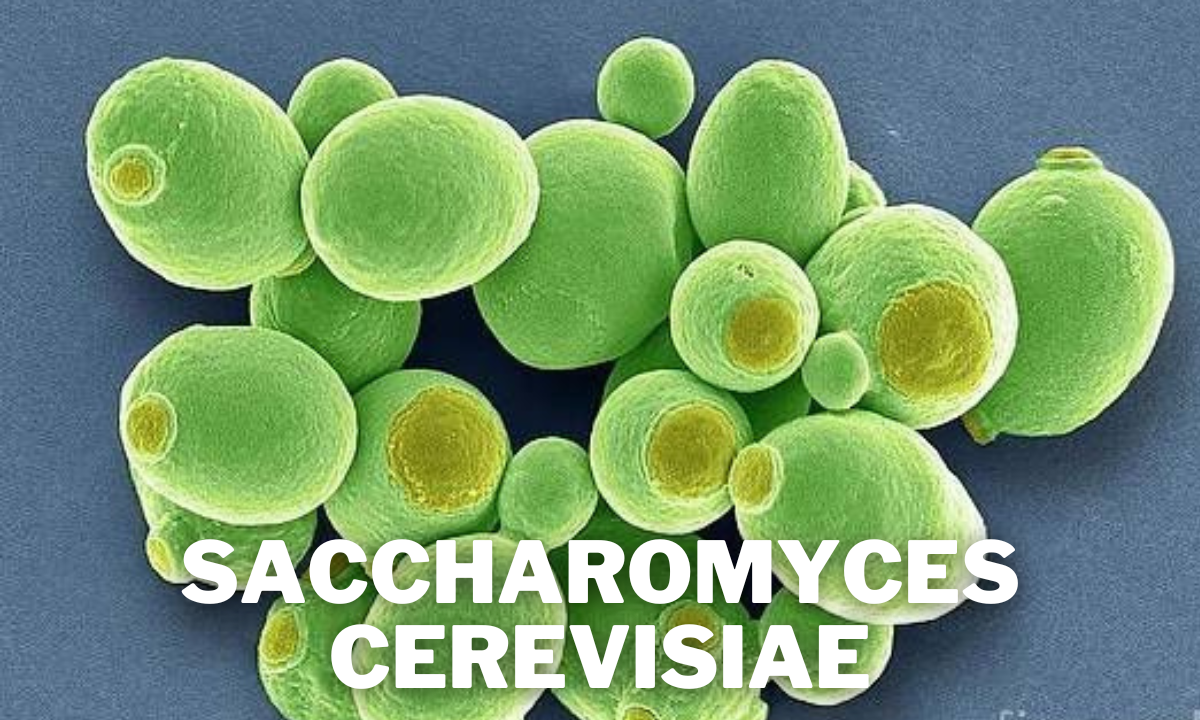Saccharomyces cerevisiae microscope: The Tiny Powerhouse You Need to See Through a Microscope
- Introduction
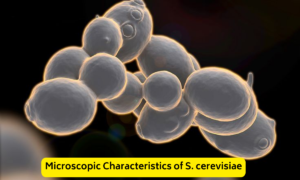
- Introduction to Saccharomyces cerevisiae microscope
- Importance of microscopes in studying S. cerevisiae
- What is Saccharomyces cerevisiae?
- Definition and classification
- Historical significance
- The Role of S. cerevisiae in Science and Industry
- Applications in baking and brewing
- Use in scientific research
- Microscopic Characteristics of S. cerevisiae
- Size and shape
- Cell structure and components
- Preparing S. cerevisiae Samples for Microscopy
- Collection and preparation
- Staining techniques
- Types of Microscopes Used to View S. cerevisiae
- Light microscopes
- Electron microscopes
- Fluorescence microscopes
- Detailed Observation Under the Microscope
- Observing cell walls and membranes
- Internal structures: Nucleus, vacuoles, and mitochondria
- Growth and Reproduction of S. cerevisiae
- Budding process
- Lifecycle stages
- Genetic Studies and Engineering
- Genetic makeup
- Genetic modification techniques
- Importance in Biotechnology
- Biofuel production
- Pharmaceutical applications
- Environmental Impact and Sustainability
- Role in environmental sustainability
- Bioremediation potential
- Common Issues in Microscopic Observation
- Troubleshooting microscopy problems
- Avoiding contamination
- Latest Research and Developments
- Recent discoveries
- Future potential
- DIY Microscopy: Viewing S. cerevisiae at Home
- Equipment needed
- Step-by-step guide
- Conclusion
- Recap of S. cerevisiae’s importance
- Final thoughts
- FAQs
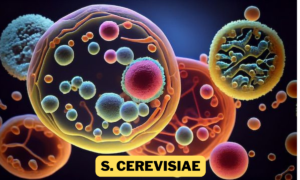
- What makes S. cerevisiae so special ?
- Can I see S. cerevisiae without a microscope ?
- How does S. cerevisiae contribute to health ?
- What are the challenges in studying S. cerevisiae ?
- Where can I get S. cerevisiae for home experiments ?
Introduction
Have you ever wondered about the tiny organisms that play a huge role in our daily lives? Meet Saccharomyces cerevisiae (Saccharomyces cerevisiae microscope) , a microscopic powerhouse you absolutely need to see through a microscope. This unassuming yeast is a superstar in both science and industry, making it a fascinating subject for anyone interested in the microscopic world .
What is Saccharomyces cerevisiae microscope ?
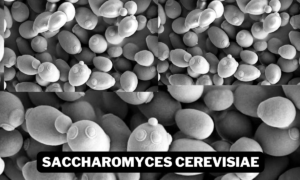 Saccharomyces cerevisiae microscope , often simply called S. cerevisiae, is a species of yeast. Classified as a fungus, it’s one of the most studied eukaryotic microorganisms. Historically, S. cerevisiae has been pivotal in baking and brewing, earning it the nickname “baker’s yeast” or “brewer’s yeast.” Its ability to ferment sugars into alcohol and carbon dioxide makes it essential for bread-making and alcohol production.
Saccharomyces cerevisiae microscope , often simply called S. cerevisiae, is a species of yeast. Classified as a fungus, it’s one of the most studied eukaryotic microorganisms. Historically, S. cerevisiae has been pivotal in baking and brewing, earning it the nickname “baker’s yeast” or “brewer’s yeast.” Its ability to ferment sugars into alcohol and carbon dioxide makes it essential for bread-making and alcohol production.
The Role of S. cerevisiae in Science and Industry
S. cerevisiae is a workhorse in various fields. In the kitchen, it leavens bread and ferments beer and wine. In laboratories, it serves as a model organism for studying basic biological processes, like cell division and genetics, due to its eukaryotic nature and the simplicity of its manipulation.
Microscopic Characteristics of S. cerevisiae
Under the microscope, S. cerevisiae is typically round to oval and about 5-10 micrometers in diameter. Its cell structure includes a cell wall, plasma membrane, nucleus, vacuoles, and mitochondria, among other components. These features are best observed using specific staining techniques that highlight different cell parts.
Preparing S. cerevisiae Samples for Microscopy
To observe S. cerevisiae under a microscope, samples need proper preparation. Start by growing the yeast in a suitable medium. Once harvested, the cells can be stained to enhance visibility. Common stains include methylene blue, which helps differentiate live cells from dead ones, and Gram stain, which highlights cell walls.
Types of Microscopes Used to View S. cerevisiae
Several types of microscopes can be used to observe Saccharomyces cerevisiae microscope :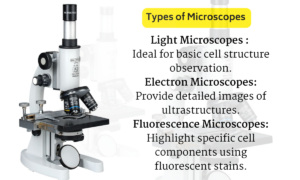
- Light Microscopes: Ideal for basic cell structure observation.
- Electron Microscopes: Provide detailed images of ultrastructures.
- Fluorescence Microscopes: Highlight specific cell components using fluorescent stains.
Detailed Observation Under the Microscope
When viewing Saccharomyces cerevisiae microscope , you can observe the thick cell wall that protects the cell. Inside, the nucleus, vacuoles, and mitochondria are prominent. The cell wall and membrane are visible with light microscopes, while internal structures require higher resolution, such as electron microscopy.
Growth and Reproduction of S. cerevisiae
Saccharomyces cerevisiae microscope reproduces asexually through a process called budding. A small bud forms on the parent cell, grows, and eventually detaches to become a new individual. This budding process is fascinating to watch under the microscope and highlights the yeast’s rapid growth capabilities.
Genetic Studies and Engineering
The genetic simplicity and versatility of Saccharomyces cerevisiae microscope make it a favorite for genetic studies and engineering. Scientists can easily manipulate its genes to study gene function and regulation. Techniques such as CRISPR have been applied to S. cerevisiae, opening doors to advanced genetic engineering and synthetic biology.
Importance in Biotechnology
In biotechnology, microscope is invaluable. It’s used in biofuel production due to its efficient fermentation capabilities. In pharmaceuticals, it’s engineered to produce insulin, vaccines, and other therapeutic proteins. Its role in producing sustainable biofuels and medicines underscores its industrial importance.
The Significance of Saccharomyces Cerevisiae
Saccharomyces cerevisiae microscope , commonly known as brewer’s yeast, is a fascinating microorganism. It’s essential in baking, brewing, and biotechnology. Understanding its structure and function provides insights into many biological processes.
What Makes Saccharomyces Cerevisiae Unique ?
Saccharomyces cerevisiae is a eukaryotic microorganism. It has a well-defined nucleus and cellular organelles. This yeast is used extensively in research due to its rapid growth and genetic tractability. Observing it under a microscope reveals its spherical or oval shape.
Key Features of Saccharomyces Cerevisiae
- Cell Structure: Saccharomyces cerevisiae cells have a diameter of 5-10 micrometers. They possess a cell wall made of chitin and beta-glucan, providing rigidity and shape.
- Reproduction: This yeast reproduces asexually through budding. A small bud forms on the parent cell, grows, and eventually detaches to form a new cell.
- Metabolism: Saccharomyces cerevisiae ferments sugars to produce ethanol and carbon dioxide, a process vital for baking and brewing.
The Role of Saccharomyces Cerevisiae in Research
Researchers use Saccharomyces cerevisiae microscope as a model organism. Its genetics are well understood, making it ideal for studying cellular processes. Scientists investigate gene function, cellular aging, and metabolic pathways using this yeast.
Saccharomyces Cerevisiae in Biotechnology
In biotechnology, Saccharomyces cerevisiae microscope is employed for recombinant protein production. Its ability to express proteins makes it valuable for producing vaccines and enzymes. Additionally, it’s used in biofuel production, contributing to sustainable energy solutions.
Observing Saccharomyces Cerevisiae Under the Microscope
To observe Saccharomyces cerevisiae, prepare a wet mount slide. Place a drop of yeast culture on a glass slide and cover it with a coverslip. Under the microscope, adjust the focus to see the cells clearly. You’ll notice their characteristic budding and cell structure.
Environmental Impact and Sustainability
Saccharomyces cerevisiae microscope contributes to environmental sustainability. Its ability to ferment agricultural waste into bioethanol helps reduce reliance on fossil fuels. Additionally, its potential in bioremediation—using organisms to clean up environmental contaminants—highlights its ecological value.
Common Issues in Microscopic Observation
Viewing Saccharomyces cerevisiae microscope under a microscope can come with challenges. Contamination from other microorganisms is common, so maintaining sterile techniques is crucial. Additionally, ensuring proper staining and sample preparation can make a significant difference in the quality of observation.
Latest Research and Developments
Recent research on S. cerevisiae has led to exciting discoveries. Advances in genetic engineering have enabled the production of more efficient biofuels and pharmaceuticals. Future research aims to further harness its capabilities, potentially revolutionizing industries from healthcare to energy.
DIY Microscopy: Viewing S. cerevisiae at Home
You don’t need a high-end lab to observe S. cerevisiae. With a basic microscope, some yeast from your local store, and a bit of patience, you can explore this microscopic world at home. Start by preparing a simple yeast culture, staining it if possible, and using your microscope to observe the fascinating process of budding.
Conclusion
Saccharomyces cerevisiae microscope may be tiny, but its impact is immense. From baking bread to fueling cutting-edge scientific research, this yeast is a powerhouse. By viewing it under a microscope, you gain a deeper appreciation for the microscopic wonders that shape our world.
FAQs
- What makes S. cerevisiae so special?
- S. cerevisiae is special because of its versatility and importance in both everyday applications like baking and brewing, and in scientific research as a model organism.
- Can I see S. cerevisiae without a microscope?

- No, S. cerevisiae is too small to be seen with the naked eye. You need at least a basic light microscope to observe its cells.
- How does S. cerevisiae contribute to health?
- S. cerevisiae is used to produce therapeutic proteins and vaccines, and its probiotic strains can support gut health.
- What are the challenges in studying S. cerevisiae?
- Challenges include contamination, maintaining sterile conditions, and the need for precise staining techniques to observe specific cell structures.
- Where can I get S. cerevisiae for home experiments ?
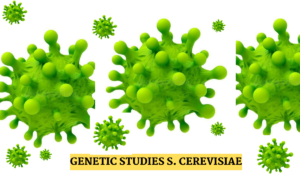
- You can purchase S. cerevisiae from baking supplies stores or online retailers. It’s commonly sold as active dry yeast.
- Saccharomyces cerevisiae under microscope 10x
- Bacteria are too small to be seen without the use of a microscope. Some eucaryotes, such as protozoa, algae, and yeast, can be seen at magnifications ranging from 200X to 400X, however most bacteria require 1000X magnification. This requires a 10X eyepiece and a 100X oil immersion objective.
- Saccharomyces cerevisiae under microscope 400x
- Choice of creatures The larger the organism, the easier it is to detect. Yeast cells are large enough to be visible under 400X magnification. Bacillus megaterium, one of the largest bacteria, can be observed at 400X. The majority of other bacteria require 1000X magnification.
- What is the magnification of yeast in 400X ?
Magnification is the microscope’s capacity to produce a larger image of an object than its actual size. As a result, with a total magnification of 400X, yeast cells are 8 micrometers in size. - saccharomyces cerevisiae microscopic morphology ?

- Cellular morphology
Typically, they have a diameter of 2-8 μm and length of 3-25 μm. Blastoconidia (cell buds) are present. They have one cell, are globose, and can extend into an ellipsoid shape. Multilateral (multipolar) budding is typical.
- Cellular morphology
- Saccharomyces cerevisiae microscope function ?
- Electron Microscopy for Model Systems
Saccharomyces cerevisiae is a popular model organism for studying cell biological processes due to its ease of genetic manipulation and close relationship to higher eukaryotes.
- Electron Microscopy for Model Systems
- Is Saccharomyces cerevisiae harmful or beneficial ?
- It has also been used to treat antibiotic-induced diarrhea and as a nutritional supplement when marketed as S. boulardii. Traditionally, S. cerevisiae has been regarded a harmless, nonpathogenic organism.
